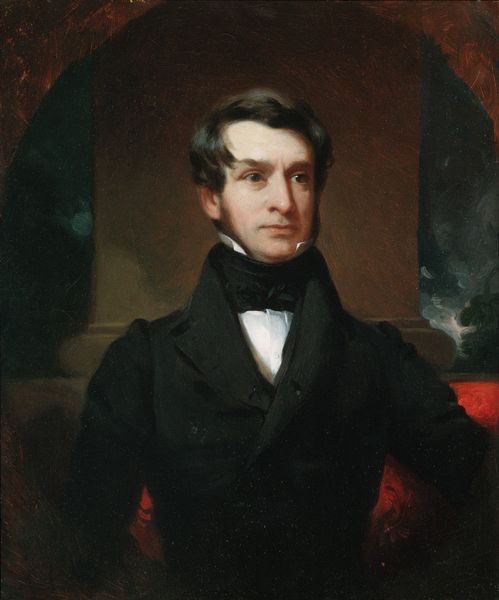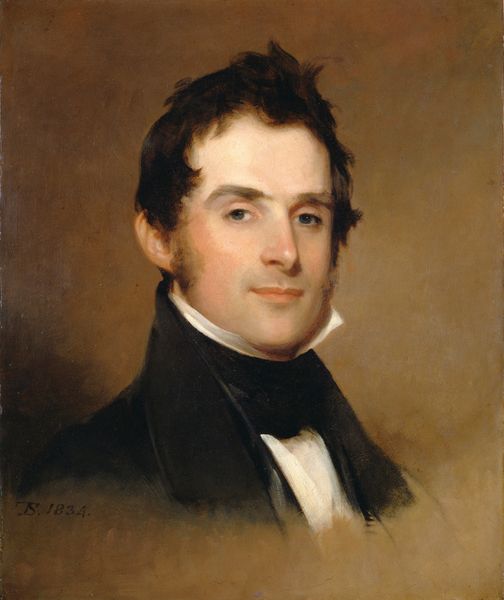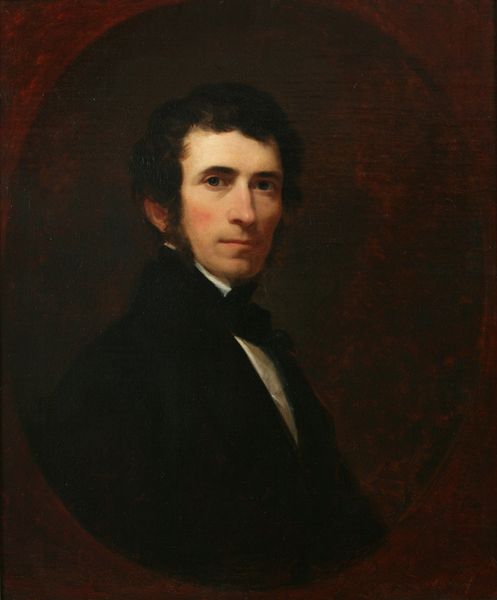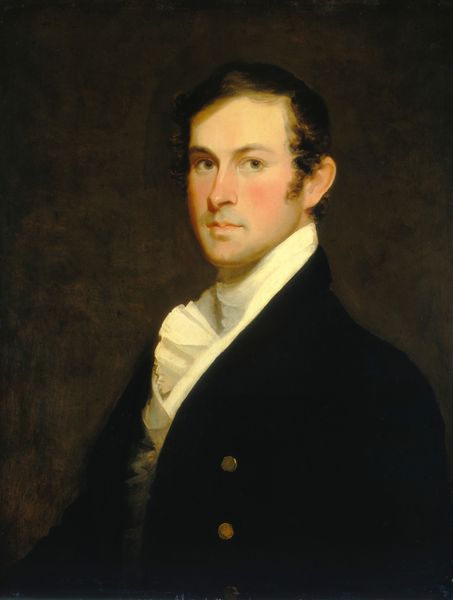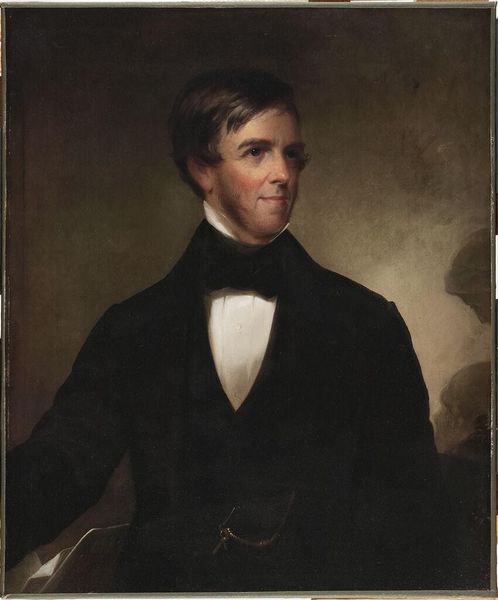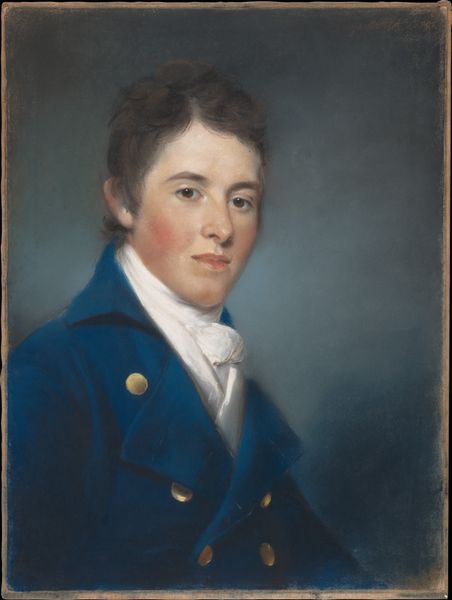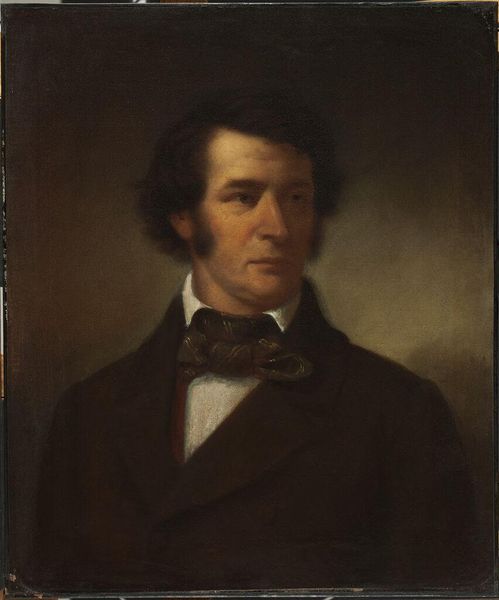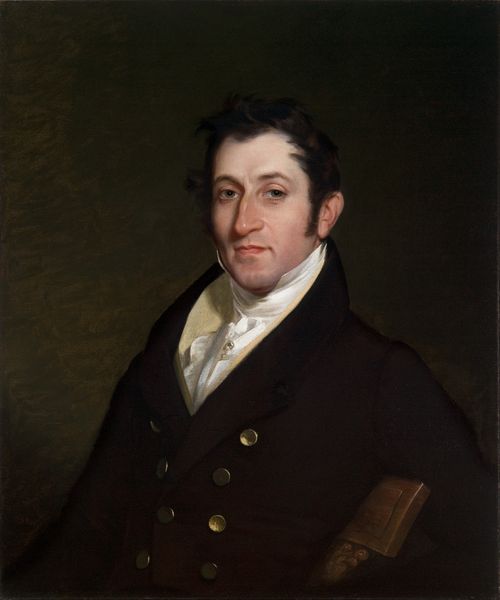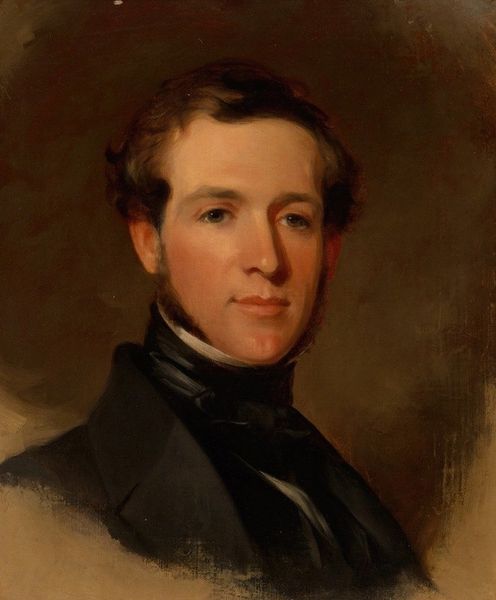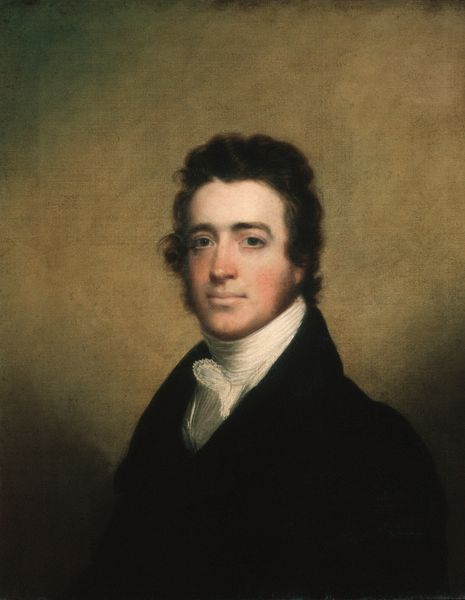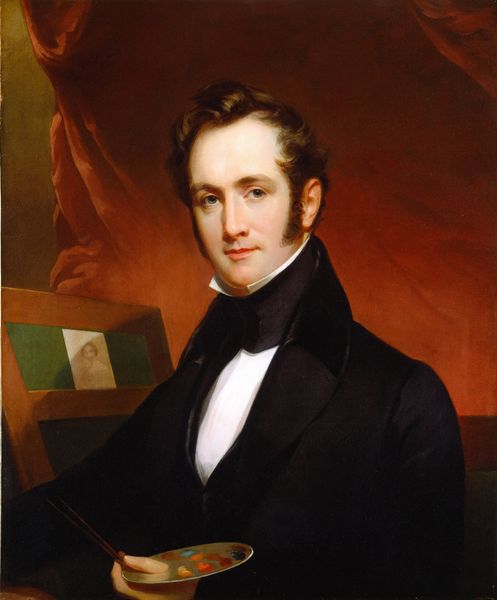
painting, oil-paint
#
portrait
#
painting
#
oil-paint
#
romanticism
#
history-painting
#
academic-art
Dimensions: 30 x 24 in. (76.2 x 61 cm)
Copyright: Public Domain
Editor: Here we have "Henry G. Stebbins," painted in 1838 by Henry Inman, created using oil paints. I find the color palette, mainly muted and dark, lends it a somewhat serious, contemplative mood. The light is expertly positioned to create contrasts and illuminate essential portions of the piece. What structural elements stand out to you? Curator: Structurally, I am particularly drawn to Inman’s utilization of the oval format. It’s a classical framework, isn’t it? It provides an immediate sense of containment and directs the eye to the subject. Furthermore, consider how the artist manipulates the dark versus light, specifically focusing on tonal contrasts to create depth and volume in the subject's face and the fabric of his clothes. It really draws you in, wouldn't you agree? Editor: Yes, I definitely agree about how effective those stark contrasts are, and how the painter expertly positioned those lights to draw your attention. The way Inman has painted the shirt beneath the coat adds an exquisite delicate and ethereal effect, but what do you make of that somewhat amorphous backdrop? It contrasts significantly with the very crisp, defined lines of the man. Curator: Precisely! The indistinct quality of the backdrop emphasizes the crispness of the subject, further drawing us to the focal point. We observe that through its very formlessness, it is given meaning, set in contradistinction to the sitter, giving the sitter an accentuated sense of volume. It amplifies the central theme – a study of line, form and proportion as signifiers. A classical interpretation if ever I saw one. Editor: Thank you, that’s fascinating. Now that you point it out, I also see how the lines are used in distinct ways, almost speaking different "languages" within the overall structure. I hadn’t thought about that before. Curator: Yes, looking deeply at how forms take shape and interrelate offers us a rich interpretation of the artist's intentions.
Comments
No comments
Be the first to comment and join the conversation on the ultimate creative platform.
